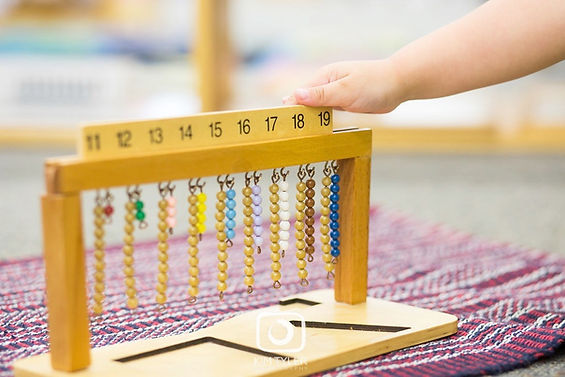
PROGRAMS
Primary Montessori Program (ages 3-6)
The Montessori preschool program serves to provide children with a solid educational foundation in which they learn fundamentals that will prepare them for the future. While typical subject areas such as math and language are covered, more importantly, Montessori preschoolers develop a love of learning and a sense of inner security as learners. The prepared environment creates in children a sense of order and self-discipline, a celebrated curiosity in their world and a sense of responsibility not only for themselves but for their peers and school. These goals are accomplished through work in the following distinct areas in the classroom.
Practical life – Children grow more and more independent as they practice life skills such as grasping, polishing and caring for their environment. They learn to tie their own shoes and pour their own glass of milk at snack. Their gross motor control is developed as is their hand-eye coordination. Older children guide their younger friends in mastering a new skill, benefiting both learner and teacher. Children will help tend gardens and care for classroom pets. They may learn to sew or do needlepoint as they develop fine-motor skills.
Sensorial – Every interaction for a child with the world involves the senses. In sensorial exercises, children are encouraged to manipulate objects in order to explore the subtle variations in the properties of the given objects. The children order and classify based on length, mass, color, odor or pitch. Children learn focus and a greater awareness of their surroundings, allowing them to more deeply appreciate their world.
Language – Preparation for writing and reading begins early with the metal insets. Children develop the coordination needed for appropriate pencil grasp by tracing geometric figures. Using sandpaper letters, children are exposed to a few letters at a time, learning the shape of the letter and hearing the sound spoken by the teacher. Tracing the letter with their fingers adds a tactile experience to the lesson. Young children learning basic phonetic skills are encouraged to compose words with the movable alphabet. The movable alphabet is a set of wooden cut-out letters that the students can manipulate on a work mat. Teachers can guide the students by presenting lessons on beginning sounds, ending sounds or short vowels. Children learn vocabulary through the use of three part cards where they match a
word with its picture. They then can self correct with the third card showing the correctly matched pair. As young as five or six, children are introduced to the concept that words perform a specific task. They will first learn the functions of the noun and verb. This will translate into their work with the movable alphabet as they create simple two and three word sentences.
Mathematics – Montessori math materials show in a concrete way various mathematical concepts. Children engage in hands on experiences that make abstract concepts clear. The materials are elegantly crafted to entice the child and hold his interest. With these engaging materials, the children learn number, symbol, sequence, operations and the memorization of basic math facts. The concrete materials allow the child to see and understand the concepts so that they are well prepared for the passage to abstraction.
History, geography and culture – Montessori students are exposed to an integrated curriculum with the ultimate goal of developing a global perspective. Children as young as three work with maps to learn the names of the world’s continents and countries. Children learn about other cultures through music, dance, literature and art. The students in the community learn to celebrate their diversity.
Snack and rest - In our environment, we firmly believe that it is the children who know when they are hungry or need a break. These needs are not met according to the teacher’s schedule. For this reason, students have access all day to our Peace Corner if they need to rest. The snack table is available for two students at a time for the duration of the morning and afternoon work periods.

